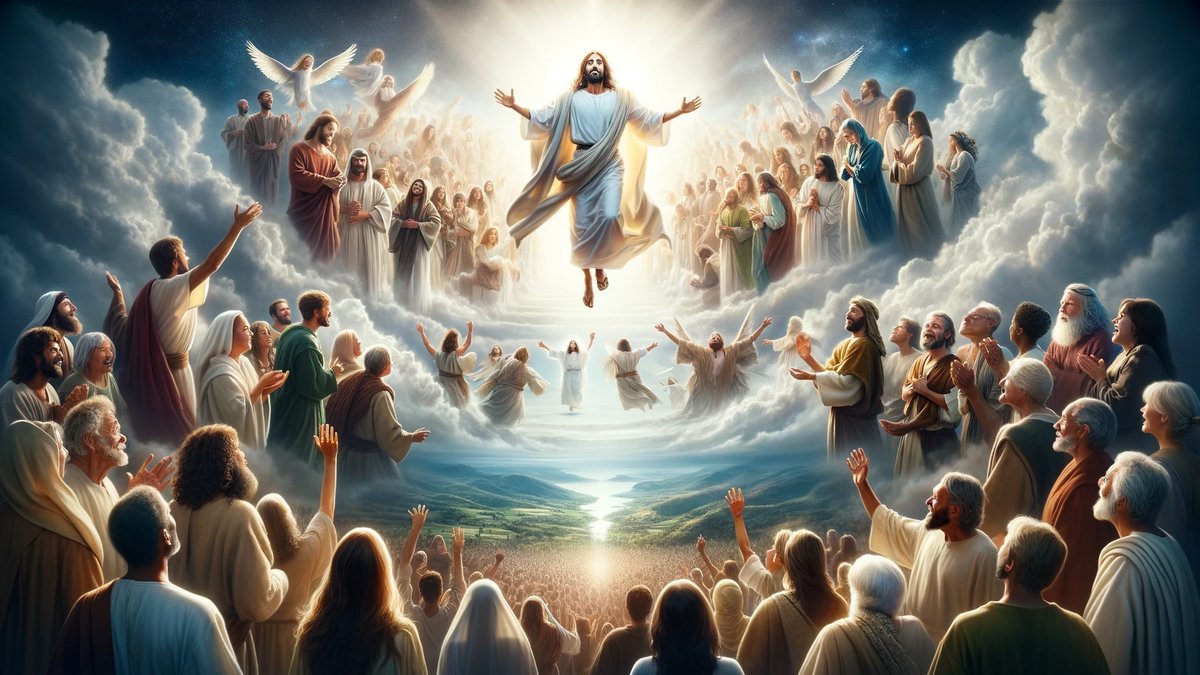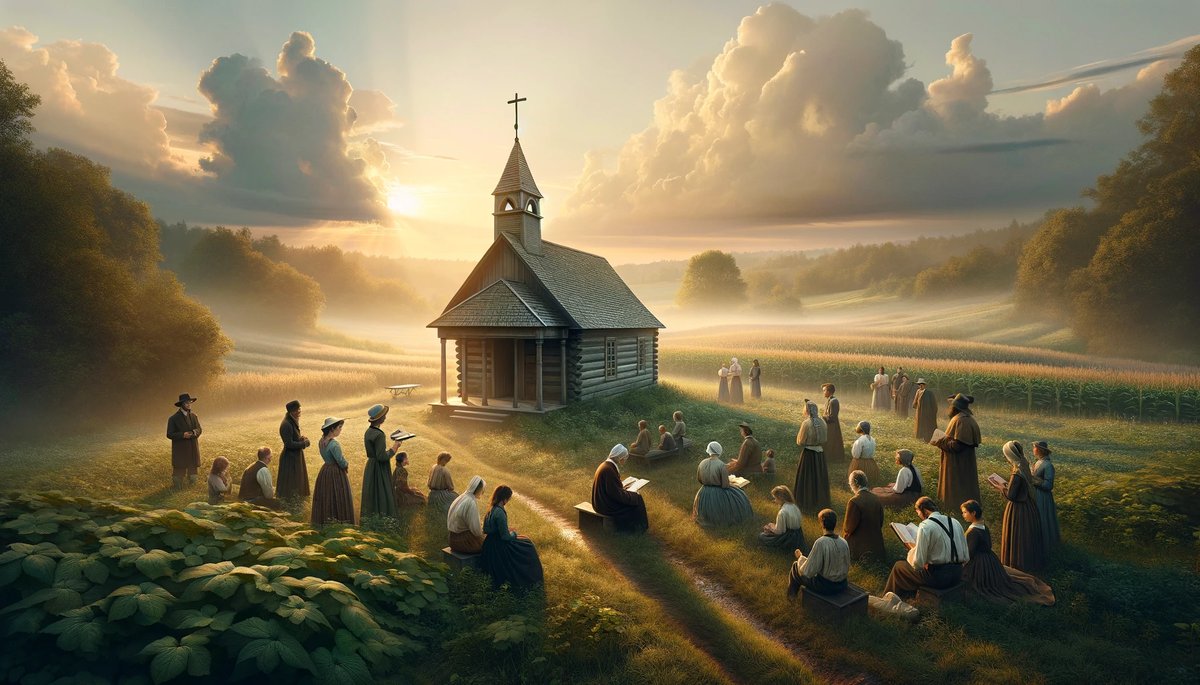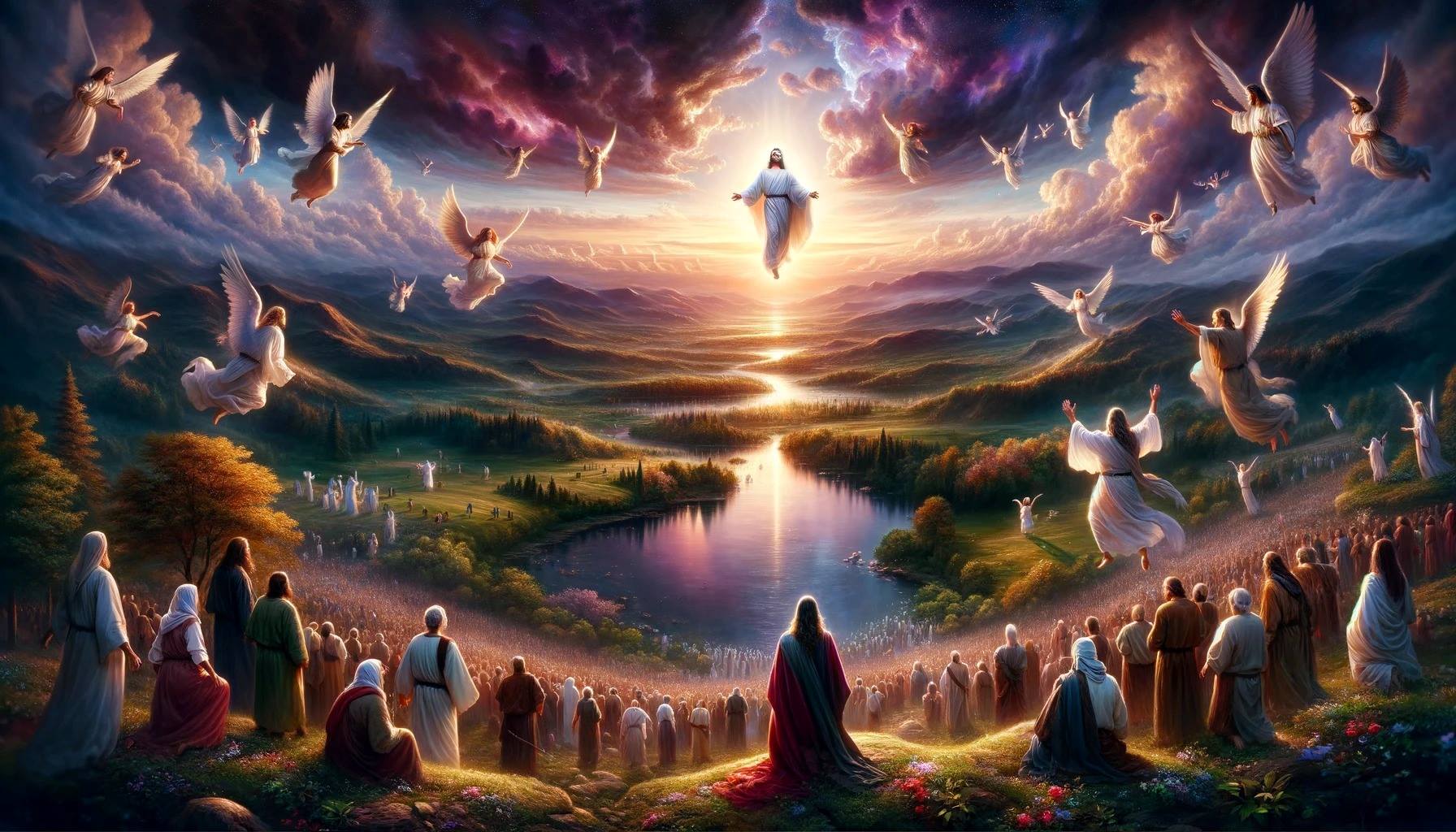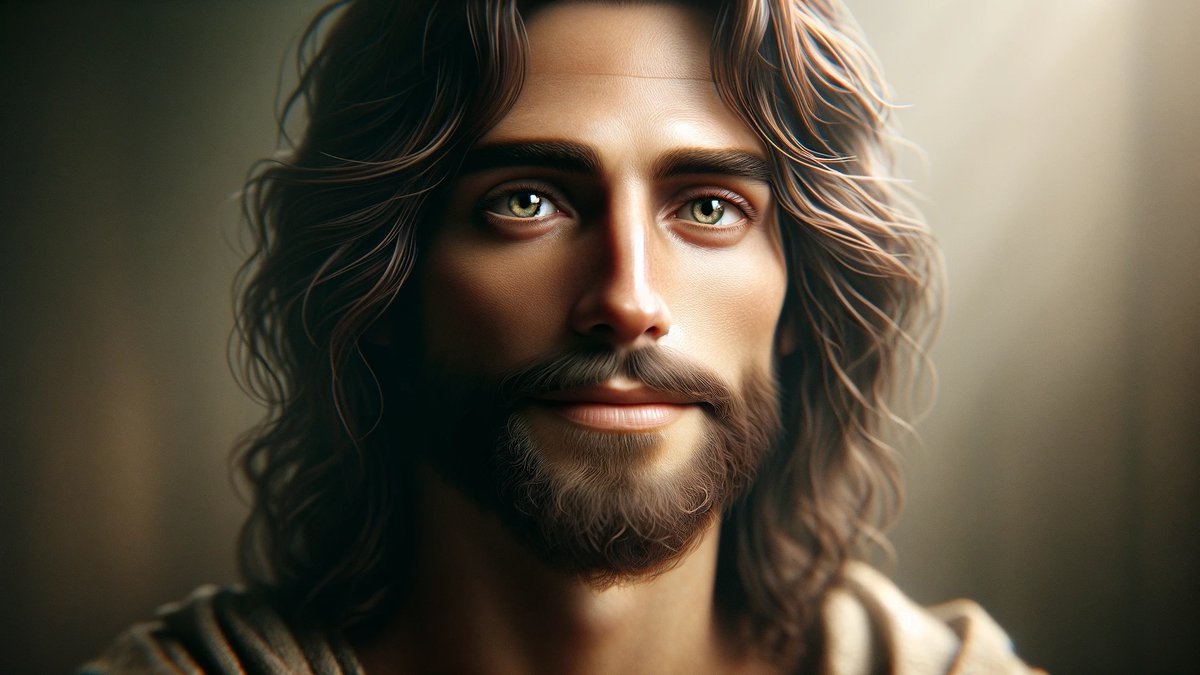Home>Christian Videos>Bible Stories>When Is The Real Birthday Of Jesus Christ


Bible Stories
When Is The Real Birthday Of Jesus Christ
Published: March 1, 2024
Ericka Andersen, an editor at Christian.net, expertly merges digital strategy with content creation, focusing on faith and societal issues. Her communication skills enhance the platform's engaging narratives, fostering meaningful dialogue on belief's impact on society.
Discover the truth about the birth of Jesus Christ and the significance of the Bible stories. Uncover the real birthday of Jesus and its impact on Christian faith. Explore more about Bible stories and their relevance today.
(Many of the links in this article redirect to a specific reviewed product. Your purchase of these products through affiliate links helps to generate commission for Christian.net, at no extra cost. Learn more)
Table of Contents
The Historical Evidence of Jesus Christ's Birthdate
-
Biblical Accounts: The Bible does not specify the exact date of Jesus Christ's birth. However, the Gospel of Luke mentions shepherds tending their flocks in the fields at the time of Jesus' birth, which suggests a date outside of winter. This has led scholars to consider alternative times of the year for Jesus' birth.
-
Historical Context: During the time of Jesus' birth, the Roman Empire conducted a census, which could provide clues to the timing of Jesus' arrival. Additionally, the mention of King Herod in the Gospel of Matthew places Jesus' birth before Herod's death, which is historically recorded.
-
Early Christian Tradition: Early Christian writers such as Clement of Alexandria and Hippolytus proposed various dates for Jesus' birth, including May 20th and April 19th. These dates were based on interpretations of historical events and religious significance.
-
Jewish Calendar: Some scholars have attempted to align Jesus' birth with Jewish festivals, such as the Feast of Tabernacles in the fall or the Feast of Dedication in the winter. These connections are based on symbolic and theological considerations rather than explicit historical evidence.
-
Archaeological Discoveries: While archaeological findings have provided valuable insights into the ancient world, no direct evidence of Jesus' birthdate has been uncovered. The lack of specific historical records has contributed to the ongoing debate surrounding the exact timing of Jesus Christ's birth.
In summary, the historical evidence of Jesus Christ's birthdate is a subject of scholarly inquiry and interpretation. While the Bible offers contextual clues, the precise date remains elusive, prompting diverse theories and discussions among historians, theologians, and believers.
Read more: When Was John The Baptist’s Birthday
The Debate Over December 25th as Jesus Christ's Birthday
-
Early Christian Adoption: The choice of December 25th as the date to celebrate Jesus Christ's birth can be traced back to the early Christian church. It is believed that the church sought to Christianize existing pagan festivals, such as the Roman Saturnalia and the birth of the sun god, by associating them with the birth of Jesus. This strategic adoption allowed for the integration of Christian beliefs into the cultural practices of the time.
-
Historical Ambiguity: The selection of December 25th as Jesus Christ's birthday lacks explicit biblical or historical validation. The New Testament does not specify the exact date of Jesus' birth, leading to uncertainty regarding the December 25th tradition. This ambiguity has fueled scholarly debates and inquiries into the origins of this particular date.
-
Pagan Influences: Critics of the December 25th date point to the influence of pagan customs and festivals during the early spread of Christianity. Some argue that the timing of Christmas was deliberately aligned with pre-existing pagan celebrations to ease the transition of the Roman Empire to Christianity. This perspective raises questions about the true historical basis for the December 25th observance.
-
Astronomical Significance: Another aspect of the debate revolves around the potential astronomical significance of December 25th. Some scholars propose that the date was chosen due to its proximity to the winter solstice, a time traditionally associated with the rebirth of the sun and the lengthening of daylight. This celestial connection adds a layer of complexity to the discussion surrounding the selection of December 25th.
-
Cultural Adaptation: Over time, the celebration of Christmas on December 25th has become deeply ingrained in Western culture and tradition. Despite the ongoing scholarly discourse, the widespread acceptance of this date has solidified its place in the annual calendar, shaping the way Christmas is observed and commemorated by millions around the world.
In essence, the debate over December 25th as Jesus Christ's birthday encompasses a range of historical, cultural, and religious considerations. The origins of this date continue to spark intellectual curiosity and analysis, reflecting the enduring impact of Christmas as a pivotal event in Christian history and contemporary society.
Alternative Theories on Jesus Christ's Actual Birthdate
-
Spring Birth: Some scholars propose that Jesus Christ was born in the spring, citing the symbolism of new life and rebirth associated with this season. The blooming of flowers and the rejuvenation of nature align with the themes of renewal and spiritual awakening, making the spring an appealing candidate for Jesus' birth.
-
Fall Birth: Alternative theories suggest Jesus Christ's birth occurred in the fall, possibly during the Jewish festival of Sukkot (Feast of Tabernacles). This hypothesis draws parallels between Jesus as the fulfillment of Old Testament prophecies and the significance of the festival in Jewish tradition, emphasizing the connection between Jesus' birth and the divine plan of redemption.
-
Summer Birth: Some researchers explore the possibility of Jesus Christ being born in the summer, considering the practical aspects of shepherds tending their flocks in the fields, as mentioned in the Gospel of Luke. The warmer climate and longer daylight hours during summer align with the conditions described in the biblical narrative, prompting speculation about a summer birthdate for Jesus.
-
No Fixed Date: Certain interpretations emphasize the spiritual essence of Jesus Christ's birth, suggesting that the focus should be on the significance of his arrival rather than pinpointing a specific date. This perspective underscores the timeless and universal impact of Jesus' birth, transcending the constraints of a calendar date and inviting contemplation of the eternal nature of his message.
-
Alignment with Jewish Festivals: Beyond the traditional December 25th celebration, alternative theories seek to align Jesus Christ's birth with Jewish festivals such as Yom Kippur or the Feast of Dedication (Hanukkah). These connections aim to highlight the theological and prophetic dimensions of Jesus' birth within the context of Jewish religious observances, offering alternative perspectives on the timing of this pivotal event.
-
Cultural Adaptations: In various cultural and religious traditions, alternative theories on Jesus Christ's birthdate emerge from diverse historical and regional contexts. For example, Ethiopian Orthodox Christians observe Christmas on January 7th, reflecting unique interpretations and practices that diverge from the widely recognized December 25th date.
The exploration of alternative theories on Jesus Christ's actual birthdate reflects the multifaceted nature of historical inquiry and religious interpretation. While the debate continues, these diverse perspectives contribute to a rich tapestry of scholarly discourse and spiritual reflection, inviting contemplation of the profound significance of Jesus' birth across different temporal, cultural, and theological landscapes.
The Significance of Celebrating Jesus Christ's Birth on December 25th
-
Cultural Unification: The observance of Jesus Christ's birth on December 25th has served as a unifying force across diverse cultures and nations. This shared celebration transcends geographical boundaries and fosters a sense of global solidarity among Christians, emphasizing the universal message of hope and redemption heralded by Jesus' arrival.
-
Historical Continuity: Over centuries, the tradition of commemorating Jesus Christ's birth on December 25th has provided a sense of historical continuity within the Christian faith. This annual observance connects contemporary believers with the enduring legacy of their religious heritage, reinforcing a collective consciousness of the pivotal event of Jesus' incarnation.
-
Spiritual Reflection: The December 25th celebration offers a designated period for spiritual reflection and introspection, prompting individuals to contemplate the profound significance of Jesus Christ's birth. It serves as a time for believers to deepen their faith, express gratitude for the gift of salvation, and reaffirm their commitment to the teachings of Christ.
-
Fulfillment of Prophecy: For many Christians, the selection of December 25th as the date to honor Jesus Christ's birth aligns with the fulfillment of Old Testament prophecies regarding the coming of the Messiah. This connection underscores the theological significance of the Christmas observance, emphasizing the divine plan of redemption and the fulfillment of ancient promises.
-
Generational Legacy: The celebration of Jesus Christ's birth on December 25th has been passed down through generations, forming an integral part of family traditions and cultural customs. This annual event fosters a sense of continuity and generational legacy, as families and communities come together to commemorate the birth of Jesus, creating enduring bonds and cherished memories.
-
Charitable Giving and Compassion: The Christmas season, centered around December 25th, often inspires acts of charitable giving and compassion towards those in need. The emphasis on generosity and goodwill reflects the teachings of Jesus Christ, encouraging individuals to extend kindness and support to others, thereby embodying the spirit of love and selflessness associated with Jesus' birth.
-
Cultural Expressions of Faith: The celebration of Jesus Christ's birth on December 25th encompasses a rich tapestry of cultural expressions, including music, art, and festive customs. These diverse manifestations of faith and creativity contribute to the vibrant tapestry of Christmas traditions, enriching the spiritual experience and fostering a sense of communal joy and celebration.
In essence, the significance of celebrating Jesus Christ's birth on December 25th extends beyond a mere historical date; it encompasses a profound tapestry of cultural, spiritual, and communal dimensions, shaping the collective identity and expression of the Christian faith. This annual observance continues to resonate with believers worldwide, uniting them in the timeless commemoration of the birth of Jesus Christ.
Exploring the Origins of Christmas Traditions
-
Advent Wreath: The tradition of the Advent wreath, with its evergreen foliage and candles, has roots in pre-Christian Germanic and Scandinavian customs. It symbolizes the anticipation of Christ's coming and the gradual increase of light as Christmas approaches.
-
Christmas Tree: The practice of decorating evergreen trees during the winter season predates Christianity and was later incorporated into Christmas celebrations. The Christmas tree, adorned with lights and ornaments, represents everlasting life and the light of Christ.
-
Mistletoe: In ancient Celtic traditions, mistletoe was revered for its healing properties and fertility symbolism. Over time, it became associated with Christmas as a symbol of love and reconciliation, leading to the custom of kissing under the mistletoe.
-
Yule Log: The Yule log, a remnant of ancient Norse and Anglo-Saxon winter solstice rituals, was traditionally burned to ward off evil spirits and celebrate the return of the sun. It was later integrated into Christmas festivities as a symbol of warmth and light.
-
Gift-Giving: The tradition of exchanging gifts during Christmas has diverse origins, including the Roman festival of Saturnalia and the Christian custom of presenting gifts to commemorate the Magi's offerings to the infant Jesus. This practice embodies the spirit of generosity and the joy of giving.
-
Christmas Carols: The singing of carols has its roots in medieval European celebrations, where songs and hymns were used to convey religious messages and spread joy during the festive season. Over time, these musical traditions evolved into the beloved Christmas carols we know today.
-
Nativity Scene: The creation of nativity scenes, depicting the birth of Jesus, can be traced back to 13th-century Italy. St. Francis of Assisi is credited with popularizing the practice as a means of emphasizing the humble origins of Christ and fostering devotion to the infant Savior.
-
Feasting and Merriment: The tradition of feasting and merriment during Christmas reflects a blend of cultural influences, including medieval feasts, Roman banquet customs, and the communal gatherings of early Christian communities. It symbolizes abundance, fellowship, and the joy of Christ's birth.
-
Candlelight Services: The use of candlelight in Christmas services harks back to the symbolism of light in various religious traditions. The lighting of candles represents the arrival of Christ as the "Light of the World" and serves as a visual reminder of spiritual illumination.
-
Santa Claus: The figure of Santa Claus, derived from the historical figure of St. Nicholas, incorporates elements of Dutch and German folklore. The modern portrayal of Santa Claus as a jolly gift-giver embodies the spirit of generosity and goodwill associated with Christmas.
The exploration of the origins of Christmas traditions reveals a tapestry of cultural, religious, and historical influences that have shaped the rich mosaic of festive customs observed around the world. These traditions not only connect contemporary celebrations to ancient practices but also reflect the enduring significance of Christmas as a time of joy, faith, and communal celebration.















